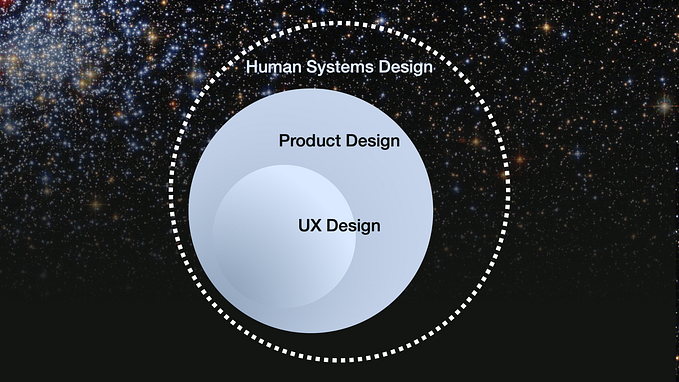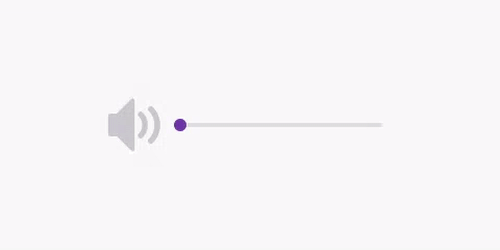3 things I learned as a former research psychologist working in UX research
I t is hard to feel like an outsider in the world of UX because no matter what your background is, chances are somebody’s path into the field was crazier! My journey into UX research was long and unplanned, but perhaps not entirely unusual.
I am a psychologist by training — after getting my undergraduate degree in Germany, I moved to the US to do a PhD in Experimental Psychology. I enjoyed leaning about people’s emotions and behavior, but the impact of my work was not always immediately visible. So I decided to see if I can use my skills and knowledge in a more applied setting. In my last summer as a PhD student I interned at Spotify as a Research Scientist, but my internship largely revolved around user research. As I was interviewing Spotify listeners, I realized UX research seemed like a great avenue for applying the skills I acquired during my PhD. Soon after my internship ended, I started my first full-time job in industry as a UX Researcher at TripAdvisor.
It wasn’t always a smooth transition, but over a year in, I believe I can share some learnings that might benefit those on a similar path. My insights range from questions to ask yourself and your stakeholders in order to produce fast-paced and quality research, to always keep showing impact, and lastly, owning your career trajectory and respecting your time.
1. Maintain rigor at high speed
In industry, study results are expected yesterday. A solid PhD research program often doesn’t produce results in months, sometimes years. In fact, it’s the study set-up that takes up the most time: from formulating the idea, iterating on the method and experimental procedure until all potentially confounding variables are controlled, to creating a data analysis plan to avoid p-hacking (finding ways of analyzing data that produce a statistically significant result) and inflated effect sizes. In industry, you often need to put a test in front of the users within a day or two of getting a research request, and present the results shortly after (this is particularly true in agile environments).
Initially I was taken aback at this perceived lack of thoroughness in applied research, but I developed a system that gratified my scientific brain while keeping me on track:
a. Figure out whether research is needed in the first place. I used to start my academic projects by doing a literature review to see who else had researched the problem and how well. I took that habit with me to industry. Often, there’s lots of good research explaining certain behaviors or trends. You can save time by synthesizing those insights and making them actionable for your stakeholders.
b. Ask your stakeholders what’s the goal of their requested research. What do they hope to get out of it? What will they do with the results if they support their hypothesis? What will they do if they don’t?
c. Get a research deadline from your stakeholders. Most will tell you it’s asap, but probe further on the urgency of the project and its company-wide priority. Often you’ll find out that the research results can come in later than what was initially requested.
d. Work back from the deadline and find a method that’s best suited to answer the research question(s) in the shortest amount of time, for as little money as possible.
e. If data analysis is too time-consuming, consider the depth of your report. If you completed a survey that is meant to answer a few simple preference questions, you might be able to get away with a quick descriptive statistics report instead of doing regression analyses. For qualitative data, you could enlist your stakeholders’ help: Can they watch some of the user videos and take notes? Can they take notes during your 1:1 interviews? Training the stakeholders to take down what they hear without adding their interpretation can usually keep your data clean and mitigate confirmation bias. This method of doing data analysis has not only helped me move quickly, but it has also provided the stakeholders a way to better connect with the user.
f. There are also ways to prioritize some parts of the research process over others. Data collection typically takes up the most of UX Researcher’s time. Whereas there’s value in talking and listening to your users directly, in a world of limited resources your time is better spent on other parts of the research process. Data collection is best outsourced or entrusted to trainees like interns or co-ops, if possible. UX researchers should instead devote most of their study time on developing the study itself: formulating hypotheses, writing down what data will be considered evidence in favor or against the hypotheses, and developing and pretesting the study method. Then a good portion of your time should be spent on analyzing data, and looking for the most impactful ways to disseminate the findings.
2. The impact of your research is as important as the research itself
This is something that’s not emphasized nearly enough in academia, but is crucial to a UX researcher’s work in tech. When I wrote academic papers or conference presentations, there was a very standard formula to follow:
Although formulaic, this kind of writing was never easy. In fact, one of the most difficult things I ever had to do was write academic papers for peer-reviewed journals (you can see examples of some final products here and here). Be that as it may, academics were expected to write such papers and other academics knew how to read and use them well.
This formula does not apply when it comes to disseminating UX research to large tech teams. It’s a crucial part of a UX Researcher’s job to be able to present their research in a form of actionable chunks of information, which need to reach a wide audience of diverse backgrounds: from people building the product (like engineers and designers), to product managers, and the C-level suite. The way these various stakeholders intake information is different — not everything is relevant to all of them!
So I learned to synthesize my results to 3–5 key bullet points that fit into an email. I learned the value of slides (which in industry are called decks) — have memorable visuals with little text, so that your audience can attentively follow along in the 10 minutes you have to tell them what to do with their product. The rest of my team are experimenting with other formats of disseminating results: videos, comic strips, podcasts, interactive posters on the wall like a space to write and erase comments, or a QR code. We have also been asking stakeholders what are the most useful ways for them to consume our research (for instance, engineers said they’d love to see short videos of users performing tasks on our website). By using this multitude of formats, you can be more confident you’re reaching a diverse audience that can benefit from your findings.
3. You’re the master of your time and it’s okay to say ‘No’
As a PhD student you merge with your work. Wherever I’d go, I would be a psychology grad student, and I didn’t stop being one even when I took vacations back home. I came to believe that constantly working was the norm, and when I just started in industry I didn’t think it was unusual to be catching up on work at 11 pm or read up on something work-related over the weekend. I was eager to get involved in all projects and found it hard to reject any potential avenues for research or collaboration. Soon this started to feel misplaced. I learned from my more seasoned colleagues that it’s okay to protect your time and have a work-life balance. I realized I didn’t have to be a UX researcher around the clock. Taking the time to be a great daughter, sister, friend, girlfriend, avid reader and writer, and a novice yogi made me happier and more productive at work.
Some of this might also have to do with me maturing as a person. My often unreasonably long hours as a PhD student were almost entirely self-imposed. I was immersed in problems I cared about deeply and I took any failures personally. I had a great support system (my wonderful advisor, other professors, the psychology department, the international center), which encouraged a work-life balance, except this was never something I valued and felt was intrinsically important because my work felt personal. One benefit of being in industry is realizing that your job is a part of a larger career trajectory. You should strive to be the best possible at it, but you should enrich your life in other ways too. Ultimately, it is this collection of experiences that will make you a better, more empathetic UX researcher.
***
I recently read that in 2017, for the first time ever, the number of PhDs hired in industry was almost on par with the number hired in academia (source). Our challenge will be to transfer our skills and knowledge in a way that sets us up for success and opens new avenues for growth. For our employers, the challenge will be to recognize the value we bring to the table and find creative ways to use our differentiating perspective to mutual benefit. After all, as one of the core TripAdvisor values goes — we’re better together!
__________
This blog entry was written by Lara Vujović in her personal capacity. The opinions expressed in the article are the author’s own and do not reflect the view of her current employer, TripAdvisor.






